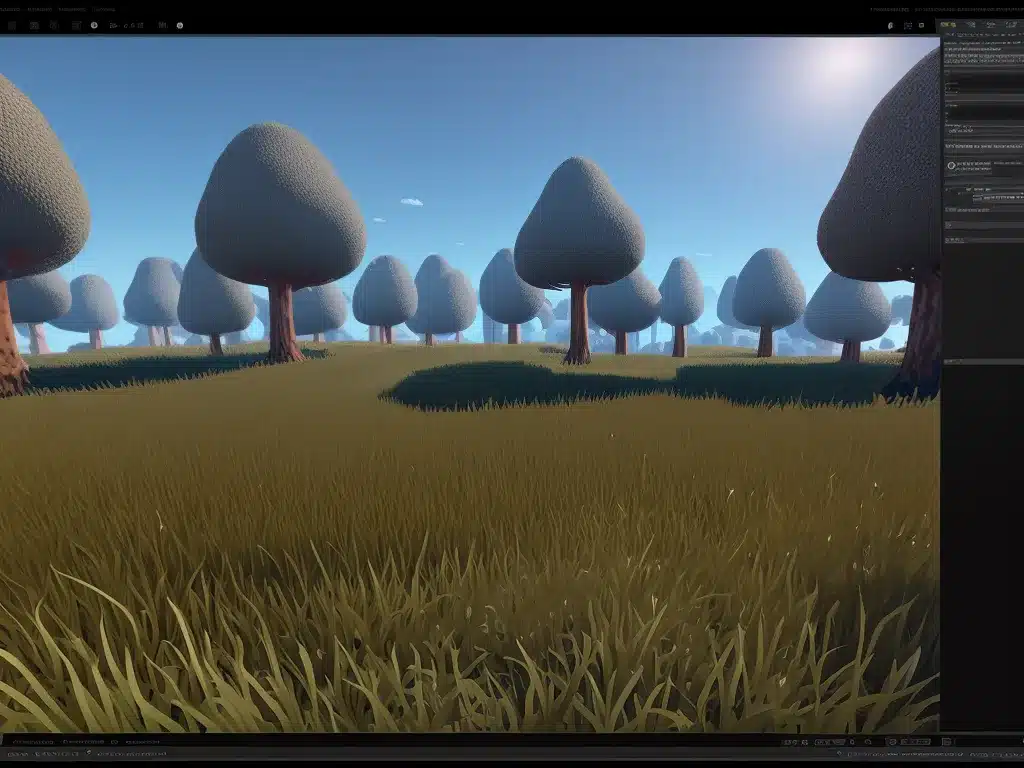
What is Procedural Texture Generation?
Procedural texture generation is the process of creating texture images algorithmically rather than manually painting or editing them. The textures are generated by computer code that follows a set of rules and parameters to create the desired visual effect.
Some key advantages of procedural textures include:
-
Detail and complexity – Procedural methods can create highly detailed and intricate textures that would be extremely difficult or time-consuming to create by hand.
-
Variety – The parameters and algorithms can be easily tweaked to generate a wide variety of variations from the same basic code.
-
Efficiency – Procedurally generated textures require less storage space compared to storing many different bitmap textures. The compact algorithms can generate textures in real-time as needed.
-
Flexibility – Parameters can be changed at runtime to dynamically modify or animate the textures if needed.
Procedural textures are commonly used in 3D modeling and game development, but also have applications in any field where dynamic or algorithmic graphics are needed.
Procedural Methods for Texture Generation
There are several common techniques and algorithms used to procedurally generate textures.
Noise Functions
Noise functions are the foundation of most procedural texture techniques. Some examples include:
- Perlin noise
- Simplex noise
- Cellular noise
These generate grayscale noise patterns with properties like controlled detail and self-similarity across different scales. Noise functions can be combined and manipulated to create organic patterns, like clouds, rock, or wood grains.
Image Filters
Applying various image filters to noise patterns is a key way to transform them into recognizable textures. Common filters include:
- Blurring
- Sharpening
- Color mapping
- Distortions like turbulence or waves
Texturing Primitives
Base shapes like planes, spheres, or cubes can be textured algorithmically by mapping noise patterns to their surface coordinates. This allows textures to be generated on the fly for 3D models and scenes.
Mathematical Patterns
Other procedural methods utilize mathematical formulas like sine waves, Voronoi cell patterns, reaction-diffusion, fractals, and more to generate visual content from iterative calculations.
Example-Based Synthesis
Example-based methods analyze a sample texture image and attempt to synthesize similar but unique variations of it using statistical analysis of its visual features.
Texturing 3D Models Procedurally
Procedural texturing really shines when applied to 3D models, allowing dynamic textures to be mapped onto their surfaces.
There are several ways to achieve this:
-
Texture baking – A static texture is generated at “bake time” by rendering procedural texture functions over the model’s UV map. This bakes the results into a regular bitmap image.
-
Shader materials – The textures can be calculated per-pixel at render-time using a shader program that samples noise and other functions. This creates a dynamic texture but requires more real-time computing.
-
Polygon paint – Directly assign random color values to the vertices or polygons of the model based on noise functions. Can create a painterly style.
-
Displacement mapping – Noise functions can dynamically perturb the actual surface geometry for details like bumps, cracks and veins.
-
Volumetric textures – Solid 3D volumes can be procedurally textured, not just surfaces, for effects like clouds, liquids, or procedurally generated worlds.
Benefits and Applications
Some key uses and benefits of procedurally generated textures:
Efficient Use for Games
In game development, procedural texturing allows for much more variety and detail while using less storage than static textures. Entire worlds can be created on the fly.
Realistic Organic Textures
The complexity and randomness of procedural algorithms excels at creating very lifelike and detailed organic textures like skin, trees, rock, liquids, etc.
Adaptive Texture Maps
Parameters can be linked to game metrics like location, damage, weather, etc to make environment textures adapt dynamically and respond to changes in the game.
Flexible Animation Effects
Since procedural textures are generated on the fly, they can be animated or modified in real-time by changing parameters over time. This allows a wide range of dynamic effects.
Non-Repeating Detail
Stochastic generation methods can efficiently add realistic fine detail without obvious repetition, even over very large areas.
Customization Options
Procedural methods allow many aspects of a texture to be parameterized, letting users easily tweak them to create variations.
Challenges
Some challenges to address when working with procedural textures:
- Results are not always predictable – random algorithms take experimentation to control.
- computations can be expensive for real-time 3D rendering.
- Algorithms require specialized knowledge to master.
- Difficult to get an exact desired look compared to painting textures.
- Dynamic parameters need intuitive user interfaces.
However, procedural texturing is a very powerful approach with incredible possibilities as the techniques continue to develop. With a combination of artistic guidance and mathematical algorithms, virtually any imaginable texture can be created algorithmically.












